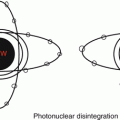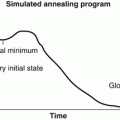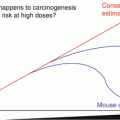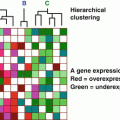, Foster D. Lasley2, Indra J. Das2, Marc S. Mendonca2 and Joseph R. Dynlacht2
(1)
Department of Radiation Oncology, CHRISTUS St. Patrick Regional Cancer Center, Lake Charles, LA, USA
(2)
Department of Radiation Oncology, Indiana University School of Medicine, Indianapolis, IN, USA
Regulatory Bodies
Protection standards set by the ICRP (International Commission on Radiological Protection) and the NCRP (National Council on Radiation Protection and Measurements – the Americans).
NRC (Nuclear Regulatory Commission) – these are the guys who license all nuclear reactor produced materials or byproduct material.
Individual State Agencies/Laws – oversee naturally occurring radioactive material, cyclotron produced material (generally positron emitting stuff), and all types of X-ray generators.
DOT (department of transportation) oversees transport of radioactive material.
FDA oversees pharmaceutical aspects of radioactive material.
Types of Radiation Effects and Limits
Stochastic and Non-Stochastic effects: (Please see Chapt. 31).
Non-stochastic are deterministic with an effect that occurs after a certain threshold dose.
Stochastic effects are probabilistic with no lower safe threshold.
Measurements:
For radiation protection, we use Sieverts (Sv) or millisieverts (mSv) instead of Gray or any other measurements of dose or exposure (see Chapt. 6).
Dose limits for Areas:
Unrestricted areas: 0.02 mSv/h (or 2 mrem/h) or 0.1 mSv/week (10 mrem/week) for shielding calculations.
Dose limits for general public per year:
Total – 5 mSv (including embryo or fetus undeclared).
Lens of eye – 15 mSv
Other Organs – 50 mSv
Dose limits for radiation workers:
Multiply general public limits by 10
Total – 50 mSv total body
Lense of eye – 150 mSv
500 mSv organs.
(there are no fetus radiation workers – child labor laws).
Children, or general public in continuous exposure situations should not get >1 mSv.
Fetus declared is 0.5 mSv/month (which is almost the same as five total for undeclared).
Appropriate visitors to hospitalized brachytherapy patients may get up to 5 mSv (Figs. 14.1 and 14.2).

Fig. 14.1
Ionizing radiation dose ranges measured in Rem (older measurement of equivalent dose) (Source: Office of Biological and Environmental Research (BER), Office of Science, US Department of Energy, http://www.science.doe.gov/ober/).

Fig. 14.2
Ionizing radiation dose ranges measured in Sieverts (SI units) (Source: Office of Biological and Environmental Research (BER), Office of Science, U.S. Department of Energy, http://www.science.doe.gov/ober/)
Structural Shielding Design for External Beam Therapy: How to Build a Bunker
TERMS: know these terms!!! (from NCRP reports 49, 51, 149 and 151).
Primary barriers – The walls behind the main target areas.
W (workload) – expressed in milliampere minutes per week (maximal mA × minutes of beam-on time) for equipment below 500 kvp (diagnostic)
For megavoltage machines, Expressed as weekly dose delivered at 1 m from the source (cGy/week at 1 m) – this can be estimated by multiplying number of patients per week by the dose per patient (since SAD calculations have dose to isocenter which is usually at 1 m). Assuming 250 per week (50 per day) with 200 cGy per fraction (standard fractionation), that comes to a workload of around 50,000 cGy/week.
U (use factor) – fraction of operating time during which the radiation is directed towards a particular barrier.
If you do a lot of ten field IMRT, it will be all over the place. If you do all opposed laterals, it will be split 50 % on the right and left walls.
If you do all TBI or TSI, it will be 100 % on one wall.
Use factor in secondary barrier calculations is always 100 % or 1 for all barriers.
Floor should usually be 1 (for all the single field things you do).
Ceiling should be ¼–½ depending on techniques.
Walls are usually ¼.
T (occupancy factor) – fraction of operating time during which the area is occupied. Someone actually tabulated the following relative occupancy times:
Full occupancy (T = 1) – work areas, offices, nurses’ stations.
Partial occupancy (T = 1/4) – corridors, restrooms.
Occasional occupancy (T = 1/8 − 1/16) – waiting rooms, stairways, elevators, outside areas, janitor closets.
Zero occupancy (T = 0) – underground.
d (distance) – distance in meters from radiation source (remember inverse square law – it is pretty important).
P (permissible dose equivalent for area)
Controlled area (overseen by radiation safety officer) – 0.1 cGy/week.
Uncontrolled area – 0.01 cGy/week.
Stay updated, free articles. Join our Telegram channel

Full access? Get Clinical Tree








